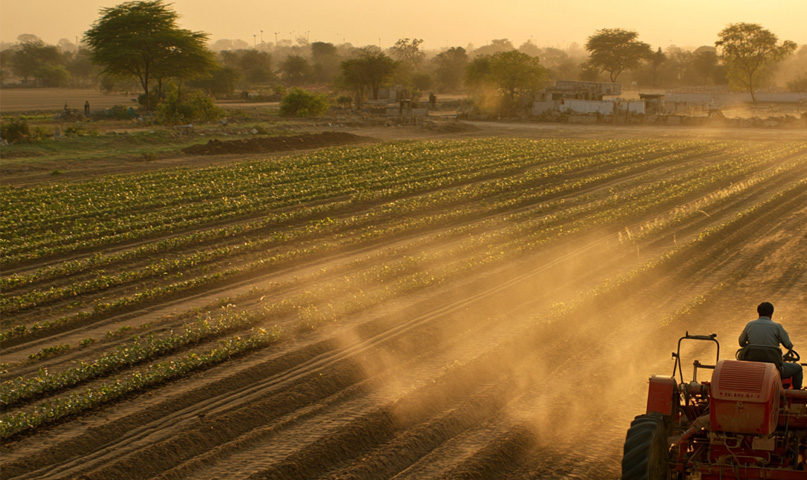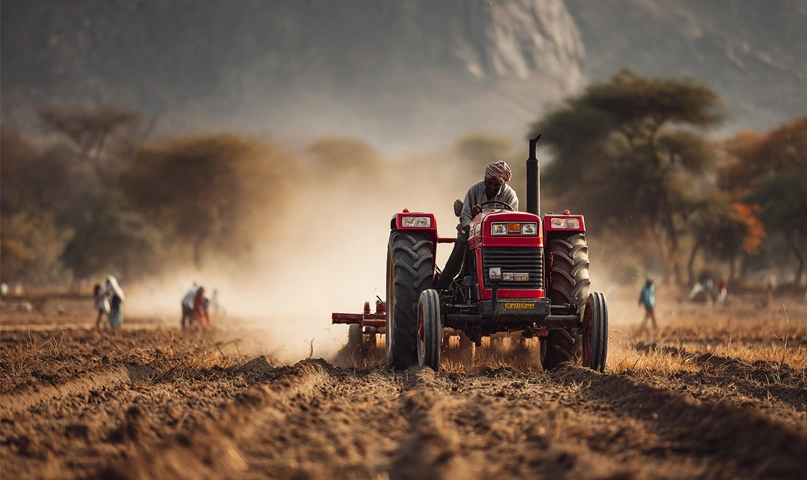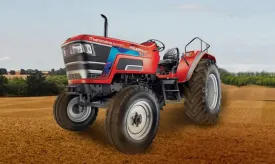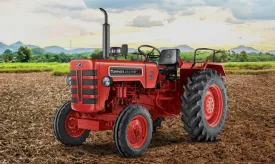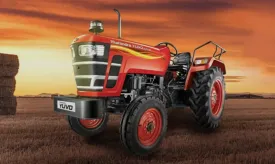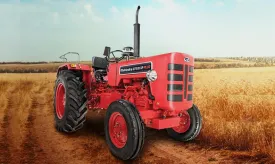Different Types of Agriculture Farming in India: Methods & Importance
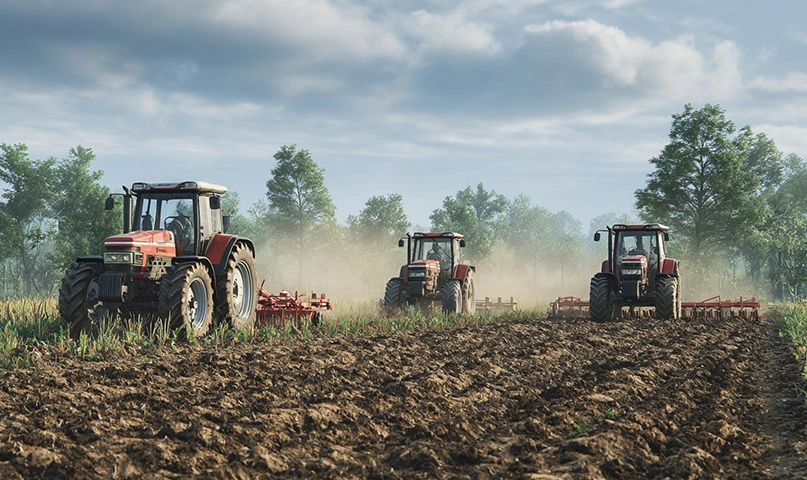
Agriculture is the backbone of India’s economy, employing nearly half of the country’s workforce and contributing significantly to GDP. With a rich diversity of climate, soil, and culture, agriculture farming in India is practiced in various forms—each suited to different regions, crops, and farming goals. Understanding the types of farming, farming methods in India, and their importance is essential for sustainable growth and productivity.
This article explores the major Indian agriculture types, traditional and modern farming techniques in India, and how tools like tractors and tractor implements are transforming the sector.
1. Overview of Agriculture Farming in India
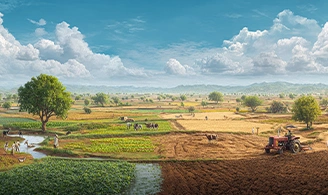
India’s agricultural landscape is shaped by varied climatic conditions, soil diversity, water availability, and cultural practices. Farmers adopt different farming methods in India depending on these factors, ranging from traditional manual farming to advanced mechanized cultivation.
Importance of agriculture farming in India:
- Provides livelihood to millions of rural households
- Ensures food security and export potential
- Supports allied industries like food processing and textiles
- Preserves biodiversity through diverse cropping systems
2. Major Types of Farming in India

2.1 Subsistence Farming
One of the oldest Indian agriculture types, subsistence farming is aimed at producing food for the farmer’s own family rather than for sale. It is labor-intensive and uses simple tools.
Features: Small landholdings, mixed cropping, low use of machinery.
Example crops: Rice, wheat, pulses, vegetables.
2.2 Commercial Farming
Here, crops are grown for sale in local or international markets. This type of farming uses high-yielding varieties, modern irrigation, and mechanization.
Features: Large-scale operations, high investment in machinery like tractors and irrigation systems.
Example crops: Cotton, sugarcane, tea, coffee.
2.3 Plantation Farming
Large estates are used to grow a single cash crop, often for export. Plantation farming requires significant labor and capital investment.
Example crops: Tea in Assam, coffee in Karnataka, rubber in Kerala.
Implements used: Tractor-drawn sprayers, tillers, and harvesters.
2.4 Mixed Farming
Combines crop cultivation with livestock rearing. This type improves income stability and maximizes resource use.
Example: Wheat cultivation along with dairy farming.
Implements used: Rotavators, seed drills, ploughs attached to tractors.
2.5 Shifting Cultivation
Also known as "slash and burn" farming, it involves clearing a patch of land, cultivating it for a few years, and then moving to a new area when soil fertility declines.
Regions: North-Eastern states like Nagaland and Mizoram.
2.6 Organic Farming
Avoids chemical fertilizers and pesticides, focusing instead on natural soil enrichment and pest control.
Benefits: Healthier produce, environmental protection, better soil health.
2.7 Dryland Farming
Practiced in regions with low rainfall, this method focuses on drought-resistant crops.
Example crops: Millets, pulses, oilseeds.
Techniques: Deep ploughing with tractor implements to retain moisture, mulching, and rainwater harvesting.
3. Farming Methods in India
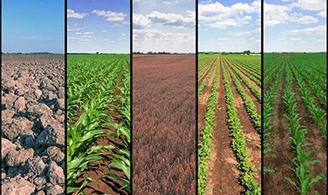
Indian farmers use a mix of traditional and modern farming techniques depending on resources, crop type, and regional practices.
3.1 Traditional Methods
- Manual ploughing with bullocks
- Broadcasting seeds by hand
- Natural irrigation using streams or ponds
3.2 Modern Methods
Modern farming techniques in India focus on increasing productivity and efficiency through mechanization, improved irrigation, and scientific crop management.
Key modern methods include:
- Mechanized Farming: Use of tractors, harvesters, and seed drills for faster operations.
- Irrigation Systems: Drip and sprinkler irrigation for water conservation.
- Precision Farming: Using GPS, soil sensors, and drones to optimize inputs.
4. Role of Tractors and Tractor Implements in Indian Farming
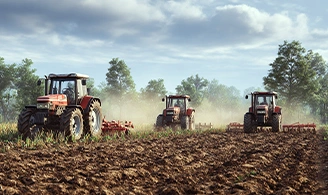
The use of tractors has revolutionized agriculture farming in India by reducing labor dependence, saving time, and increasing productivity. Tractors can handle a wide range of tasks—from land preparation to harvesting—when paired with the right tractor implements.
Common tractor implements used in India:
- Ploughs (moldboard, disc, chisel) for soil turning
- Rotavators for fine seedbed preparation
- Seed Drills for uniform planting
- Cultivators for weed control
- Sprayers for crop protection
- Harvesters for efficient crop cutting
Mechanization is especially important for commercial farming and large-scale crop production, where timely operations can make the difference between profit and loss.
5. Importance of Different Types of Farming in India
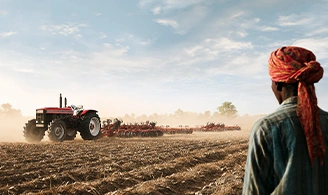
Each type of farming plays a critical role in India’s agricultural economy:
- Subsistence Farming: Ensures food security for rural families.
- Commercial Farming: Boosts exports and generates rural employment.
- Plantation Farming: Brings foreign exchange through exports.
- Mixed Farming: Diversifies income sources and reduces risk.
- Organic Farming: Supports health and environmental sustainability.
- Dryland Farming: Utilizes marginal lands for production.
By blending traditional knowledge with modern farming techniques in India, farmers can improve yields while maintaining soil health and sustainability.
6. Challenges and the Way Forward

While agriculture farming in India has evolved significantly, challenges remain:
- Small and fragmented landholdings
- Dependence on monsoon rains
- Limited access to modern machinery for small farmers
- Soil degradation from overuse of chemicals
Solutions:
- Encouraging cooperative farming for economies of scale
- Expanding access to affordable tractors and implements
- Promoting sustainable practices like crop rotation and organic inputs
- Training farmers in advanced farming methods in India
Conclusion
India’s agricultural diversity is both a challenge and a strength. From subsistence farming in rural villages to highly mechanized commercial farming in fertile plains, every type of farming contributes to the nation’s food basket and economy. By adopting efficient farming techniques in India, leveraging tractors and modern tractor implements, and maintaining sustainable practices, Indian agriculture can continue to thrive in the years ahead.









